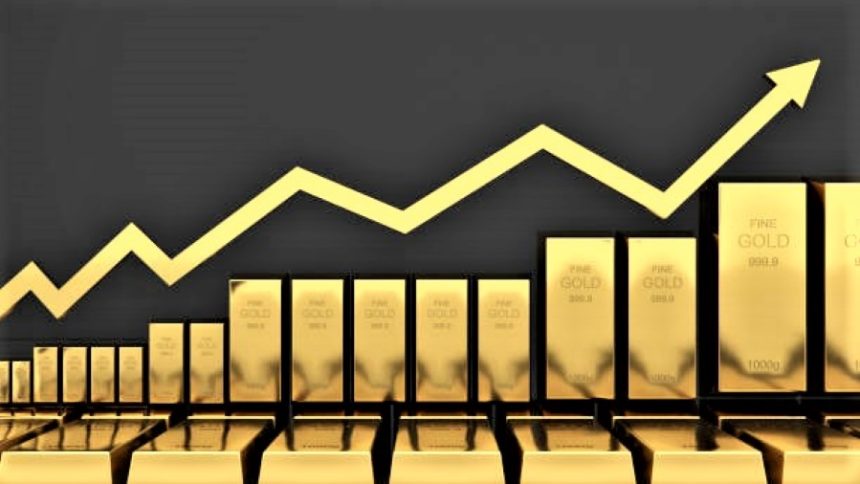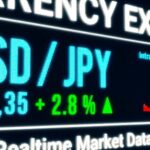Gold Price Retreats from Two-Week High, But Bullish Momentum Holds Amid Geopolitical Turmoil and Fed Uncertainty
The gold price (XAUUSD) trimmed its intraday gains on Tuesday after hitting a two-week high earlier in the Asian session. Despite the pullback, the precious metal remains buoyant near the $2,360 level, maintaining upward momentum for a second consecutive day. The retracement comes as the US Dollar (USD) gains modest traction on the back of upbeat US macroeconomic data. However, continued safe-haven flows, driven by intensifying geopolitical risks and uncertainty over US trade policies, keep the bullish bias intact ahead of the Federal Reserve’s two-day FOMC meeting starting later today.
While the market digests the latest signals from global events, gold continues to draw investor interest as a reliable hedge against volatility, recession fears, and central bank ambiguity. The overall sentiment remains constructive, with traders viewing any corrective dips as renewed buying opportunities.
Gold Holds Firm on Safe-Haven Demand Despite Dollar Resilience
Gold’s strength in the face of a rebounding US Dollar reflects its robust safe-haven appeal. The greenback found some footing after the Institute for Supply Management (ISM) Services PMI beat forecasts, and Friday’s non-farm payrolls report confirmed the resilience of the US labor market. Yet, these data prints have not been enough to deter investors from seeking protection in gold, especially with multiple global flashpoints intensifying risk aversion.
Despite a two-day losing streak, the USD rebounded modestly, but gold retained most of its gains—underscoring its appeal as a shield against both inflation and geopolitical uncertainty.
Geopolitical Tensions Continue to Bolster Gold’s Appeal
Russia-Ukraine Conflict Escalates
Tensions between Russia and Ukraine remain elevated as drone attacks targeted Moscow for the second consecutive night, prompting authorities to shut down all three of the capital’s major airports. Ukrainian forces reportedly launched attacks on a power substation in Russia’s Kursk region, amplifying fears of retaliatory escalation.
These developments have reintroduced volatility into European markets and are encouraging investors to rotate capital into safer assets like gold, which thrives during periods of geopolitical distress.
Middle East Unrest Fuels Safe-Haven Flows
Meanwhile, in the Middle East, Israeli forces—reportedly with US coordination—launched airstrikes on Yemen’s Hodeidah port, retaliating against a ballistic missile attack launched by Houthi rebels that struck Ben Gurion International Airport in Israel. This exchange marks a significant escalation in regional tensions and could potentially disrupt global energy supplies and trade routes.
Investors are increasingly cautious, favoring gold as a strategic hedge amid growing concerns about broader regional instability that could impact global markets.
Trump’s Erratic Trade Policy Keeps Market Anxiety Elevated
Although optimism emerged following comments that China may be open to new trade negotiations, US President Donald Trump’s unpredictable trade policy stance continues to rattle market sentiment.
On Sunday, speaking aboard Air Force One, Trump indicated that trade deals with unnamed countries could be finalized “as early as this week.” However, his lack of specificity—and a concurrent announcement of a 100% tariff on foreign-made films—has fueled investor skepticism.
This erratic policy signaling has amplified global economic uncertainty, further reinforcing the attractiveness of gold as a store of value and protective asset.
Economic Data Supports Dollar, But Gold Remains Resilient
The US economic outlook received a boost from recent data releases:
- The ISM Services PMI rose to 51.6 in April, up from 50.8 in March and surpassing the 50.6 consensus estimate.
- Friday’s strong non-farm payrolls data showed solid job creation, alleviating near-term recession fears.
These developments have helped the USD regain some lost ground, but gold’s resilience highlights the market’s deep-rooted concerns about long-term growth, inflation, and geopolitical threats.
Despite favorable macro data, gold continues to attract demand, suggesting that investors are preparing for prolonged market volatility and looking for hard assets to protect their portfolios.
FOMC Meeting in Focus: Traders Seek Clarity on Rate Outlook
The Federal Reserve’s two-day FOMC meeting, commencing today, is the most anticipated event on this week’s macroeconomic calendar. While the Fed is widely expected to keep interest rates unchanged, all eyes are on the accompanying policy statement and Fed Chair Jerome Powell’s press conference scheduled for Wednesday.
Key Market Expectations:
- No rate cut in June; expectations have shifted toward a more prolonged pause.
- Commentary on inflation, wage growth, and global risks will be closely scrutinized.
- Traders are looking for cues about whether a rate cut is still possible in the second half of 2025.
If the Fed adopts a cautious or dovish tone due to global instability and slower inflation, gold could find fresh bullish momentum. On the other hand, any hawkish surprise could trigger a short-term pullback, although the overall uptrend would likely remain intact.
Technical Analysis: Gold Price Still in Bullish Structure
Technically, gold continues to exhibit a strong bullish setup. The precious metal’s recent rally brought it near the $2,375 resistance zone, and though it failed to break through decisively, buyers remain active on dips.
Key Technical Levels:
- Immediate Resistance: $2,375, followed by the psychological barrier at $2,400
- Support Zones: $2,345 and $2,330
- 200-hour EMA: Positioned as dynamic support around $2,315
Momentum indicators such as the Relative Strength Index (RSI) remain comfortably below overbought territory, allowing room for further upside. A sustained break above $2,375 could expose $2,400 and $2,450 in the medium term.
Until a decisive breakdown below $2,330 occurs, the technical outlook remains firmly bullish, with dips seen as accumulation opportunities.
Investor Sentiment: Gold Seen as Insurance Against Global Uncertainty
The broader market tone continues to favor gold as a hedge against a mix of macro and geopolitical uncertainties. Institutional investors are increasing allocations to gold ETFs and futures amid the following risks:
- Potential military escalations in Europe and the Middle East
- Trade war re-escalation risks driven by US political rhetoric
- Central bank uncertainty and a fragile global economic recovery
- Persistent inflation in some sectors despite cooling headline CPI
These overlapping risk factors make gold a strategic asset in diversified portfolios. With central banks, including the People’s Bank of China and Reserve Bank of India, continuing to buy gold as part of their foreign reserve strategy, underlying demand remains robust.
Outlook: Gold Price Set to Test Higher Levels if Fed Signals Caution
As markets prepare for the FOMC outcome, gold remains in a prime position to capitalize on any dovish tilt or signs that the Fed is growing more concerned about external risks. If Powell signals patience and downplays the urgency to hike or delay cuts, gold could rally past $2,375, possibly targeting $2,400 and beyond.
Conversely, if the Fed leans more hawkish than expected, gold may see short-term pressure, but ongoing geopolitical developments are likely to limit any substantial downside.
The precious metal’s role as a hedge and store of value remains central in a complex and volatile macro environment.







